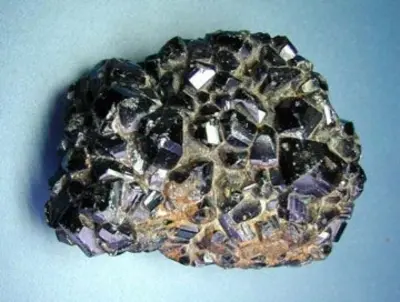Sedimentological processes, such as eddy sedimentation, sedimentation velocity changes, pressure and temperature changes, the presence of other sediments (such as silt and shale), and water movement, can play a role in the formation of cassiterite

Cassiterite can be formed in different ways, including formation through magmatic melting, formation through hydrothermal processes, changes in ground and Chemical conditions in mineral areas, and mineral metamorphisms. The main processes for cassiterite formation are magmatic activity. In this process, magmas containing elements such as tin are formed deep in the earth. As these magmas cool down in depth, the formation of cassiterite occurs through freezing and stagnation of molten materials in mineral channels and cracks.
Other factors such as hydrothermal processes can also cause the formation of cassiterite. In this process, hot water containing dissolved substances usually penetrates the surface of the earth through a vein system. When these hot waters penetrate into the coldest regions of the earth, they are released and some enriched materials are deposited in them. This process can lead to the formation of cassiterite spurs in mineralized areas.
The formation of cassiterite occurs due to specific chemical compositions and unique geological and mineral conditions in different regions of the world. The formation of cassiterite is related to geological sciences, especially sedimentary and mineral geology. Based on their studies and researches, geological scientists have presented some hypotheses about the formation of cassiterite. But it should be noted that the formation of cassiterite is a complex process and there are still many theories about the exact way of its formation.
The presence of tin sources, such as magmas or sediments containing tin, as well as the presence of sedimentary gases can provide the necessary conditions for the formation of cassiterite. The presence of the right chemical conditions, including the presence of sufficient oxygen, the right pH and the right chemical balance in the environment, can help cassiterite to form. Sedimentological processes, such as eddy sedimentation, sedimentation velocity changes, pressure and temperature changes, the presence of other sediments (such as silt and shale), and water movement, can play a role in the formation of cassiterite. The formation of cassiterite may require a long time and land changes such as changes in sea level, erosion, changes in temperature and pressure, and tectonic activity.
The extraction of tin from cassiterite is done in different ways, but the main method of extracting tin from cassiterite as the main source of tin is the flotation process. The cassiterite ore is first crushed to make it small enough to be processed well in later stages. Crushing operations may include the extraction of cassiterite and obtaining tin Metal from it. The cassiterite ore is mined and crushed enough to be further processed. This process involves crushing the cassiterite Stones to the right size and separating the worthless parts from it.
Common methods include flotation and electrostatic separation. In flotation, cassiterite Rocks are sufficiently crushed and added to a solution of water and Chemicals that separate the tin from the rest of the material. In electrostatic separation, tin is separated by using different electric charges on different particles. After the separation of tin using physical method, chemical processing steps can take place. These steps include extracting the tin metal from the solution, purifying and cleaning it. Usually, smelting and electrolysis processes are used to obtain tin metal.
After the final extraction, tin metal may need processing and purification steps to reach the desired purity. These steps include chemical refining, remelting and other steps to improve the properties and purity of tin. The extraction of tin from cassiterite is a complex process that requires a combination of physical and chemical steps. The exact methods and steps of extraction may vary depending on the mining conditions and the technologies being developed. Also, environmental, economic and technical limitations are also influential in the selection of tin extraction methods from cassiterite.
Tin is used in the construction industry as one of the structural materials. Alloys containing tin have good resistance to corrosion and heat. Tin is used to produce sanitary ware, water and sewage pipes, gas pipes and other parts such as beams and metal structures. Tin combines with other Metals to form important alloys. Some well-known tin alloys include bronze (an alloy of Copper and tin), babbitt (an alloy of tin and iron), and lead (an alloy of lead and tin).
The use of tin as one of the main materials in the production of acid batteries is strategic. Tin is used in various forms for battery electrodes and is used to provide energy in electronic devices such as automobiles, air conditioning systems, power backup systems, and other power devices that require batteries. Tin is used as one of the main elements in the production of lead and tin, which is important in the automotive industry for the production of parts with anti-corrosion coatings, the manufacture of guide parts and structural parts. Also, tin, as a material with high plating and soldering capabilities, is used in the production of pipes, connectors, wires, and other parts that require soldering.






